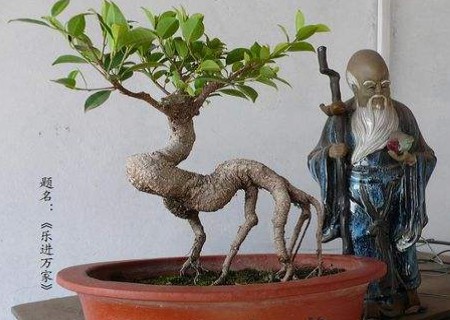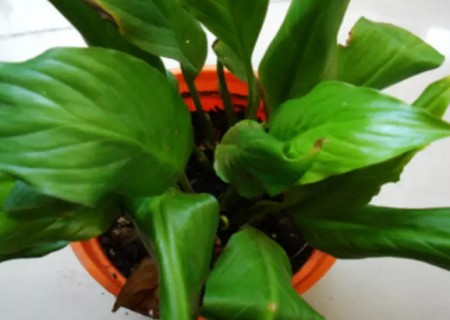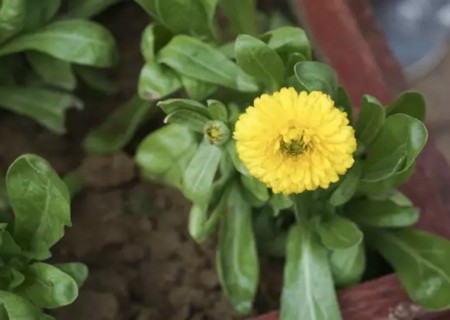Pruning method of bonsai dew root
In the wild mountains and forests, we often encounter strange-shaped old trees, some abrupt and rugged, some graceful, some simple and vigorous, some majestic. In a word, all kinds of trees stand erect in the nature with their own posture and become a part of nature. For ordinary people, the charm of these "strange" trees may not be seen, but under the hands of bonsai artists, they may be a well-carved bonsai, a natural work of art.

To make these "strange" old trees show in front of the world with the unique elegance of bonsai, there is no lack of artists' hard work. For example, when making bonsai, Rugen pruning, I don't know how much effort it takes artists to make these "monsters" bring people beauty with a new attitude. The following editor will learn from the experience of art masters to explain the method of pruning the roots of bonsai trees.
1. Cut off dry
When the plant is planted in the ground for 2-3 years, the seedlings are of the right size, the roots are basically grown, and have a certain ability to resist pruning. We can dig it out and truncate its trunk according to the creative needs.
2. Root trimming
Root pruning is a key step in bonsai root pruning. At this time, we will find that the main root may be too long, and even some lateral roots are very stout. In this case, in order to promote the fibrous root growth, we need to prune the main root and the oversturdy lateral root.
3. Modeling
After cutting and pruning, we need to plant it again for 2-3 years. In the second round of cultivation process, we can carry on the modeling treatment. After growing and shaping at the same time of pruning, we can transplant it on the pot.
4. Upper deep basin
Before putting it on the pot, we need to prune it again so that the branch part of it is the same as the root system, showing a change in thickness, which is also done to make it easier to put on the pot. For the first time, you should choose a larger and deeper pot, which is more conducive to the recovery of the tree and the stretching of the roots, and looks more abundant as a whole. At this time, it is obvious that the root system exposed in the basin has become relatively stout.
5. Change the shallow basin
After 2-3 years of maintenance and management in the deep basin, it can be found that not only the root system has become more prominent, but also the branches of the whole pot of bonsai trees have become stronger. At this time, we need to change the basin again. This time, the original deep basin has been replaced with a shallow basin.
6. Management
After two times of pruning and potting, we don't have to change the basin in a short time. The next work is mainly daily maintenance and management. Apart from keeping up with water and fertilizer, our main job is to shape trees. As the modeling has been carried out before, the later pruning tree only needs partial finishing, and there is no need to take drastic measures. The later plastic surgery is mainly the trimming and improvement of the details.
The above is the tree bonsai root pruning method, only for your reference, the specific production effect still needs to be tested, corrected and consolidated in practice.
Time: 2019-06-09 Click:
- Prev

Plain sailing how to divide the basin (ramet)
Plain sailing, also known as white palm, white crane taro. Can be soil culture, can also be water culture, beautiful flowers and leaves, exuberant growth, can purify the air. Plain sailing is a popular plant in the market, and it is loved by everyone because of its beautiful meaning. Plain sailing, which has been raised for two years, has been very strong.
- Next

Sowing method of Calendula
Calendula, also known as marigold, whose yellow flowers are very eye-catching, are holy flowers in the eyes of Indians. They are often made into a wreath and hung around their necks. These beautiful yellow, orange and golden flowers can be seen everywhere in Indian flower markets. Calendula is very hardy and barren, and can blossom throughout winter until early spring.
Related
- Fuxing push coffee new agricultural production and marketing class: lack of small-scale processing plants
- Jujube rice field leisure farm deep ploughing Yilan for five years to create a space for organic food and play
- Nongyu Farm-A trial of organic papaya for brave women with advanced technology
- Four points for attention in the prevention and control of diseases and insect pests of edible fungi
- How to add nutrient solution to Edible Fungi
- Is there any good way to control edible fungus mites?
- Open Inoculation Technology of Edible Fungi
- Is there any clever way to use fertilizer for edible fungus in winter?
- What agents are used to kill the pathogens of edible fungi in the mushroom shed?
- Rapid drying of Edible Fungi

